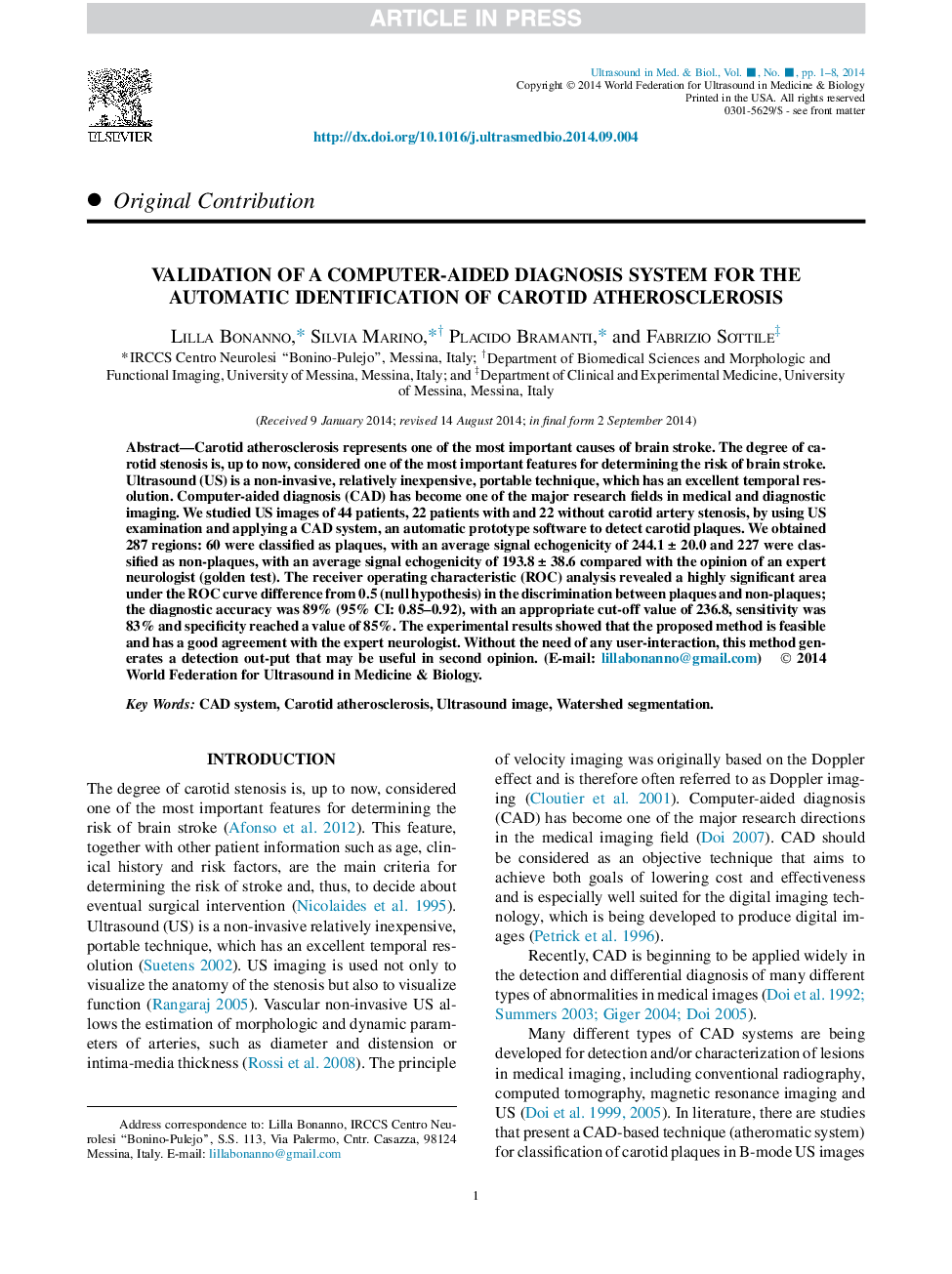| Article ID | Journal | Published Year | Pages | File Type |
|---|---|---|---|---|
| 10691403 | Ultrasound in Medicine & Biology | 2015 | 8 Pages |
Abstract
Carotid atherosclerosis represents one of the most important causes of brain stroke. The degree of carotid stenosis is, up to now, considered one of the most important features for determining the risk of brain stroke. Ultrasound (US) is a non-invasive, relatively inexpensive, portable technique, which has an excellent temporal resolution. Computer-aided diagnosis (CAD) has become one of the major research fields in medical and diagnostic imaging. We studied US images of 44 patients, 22 patients with and 22 without carotid artery stenosis, by using US examination and applying a CAD system, an automatic prototype software to detect carotid plaques. We obtained 287 regions: 60 were classified as plaques, with an average signal echogenicity of 244.1 ± 20.0 and 227 were classified as non-plaques, with an average signal echogenicity of 193.8 ± 38.6 compared with the opinion of an expert neurologist (golden test). The receiver operating characteristic (ROC) analysis revealed a highly significant area under the ROC curve difference from 0.5 (null hypothesis) in the discrimination between plaques and non-plaques; the diagnostic accuracy was 89% (95% CI: 0.85-0.92), with an appropriate cut-off value of 236.8, sensitivity was 83% and specificity reached a value of 85%. The experimental results showed that the proposed method is feasible and has a good agreement with the expert neurologist. Without the need of any user-interaction, this method generates a detection out-put that may be useful in second opinion.
Related Topics
Physical Sciences and Engineering
Physics and Astronomy
Acoustics and Ultrasonics
Authors
Lilla Bonanno, Silvia Marino, Placido Bramanti, Fabrizio Sottile,
